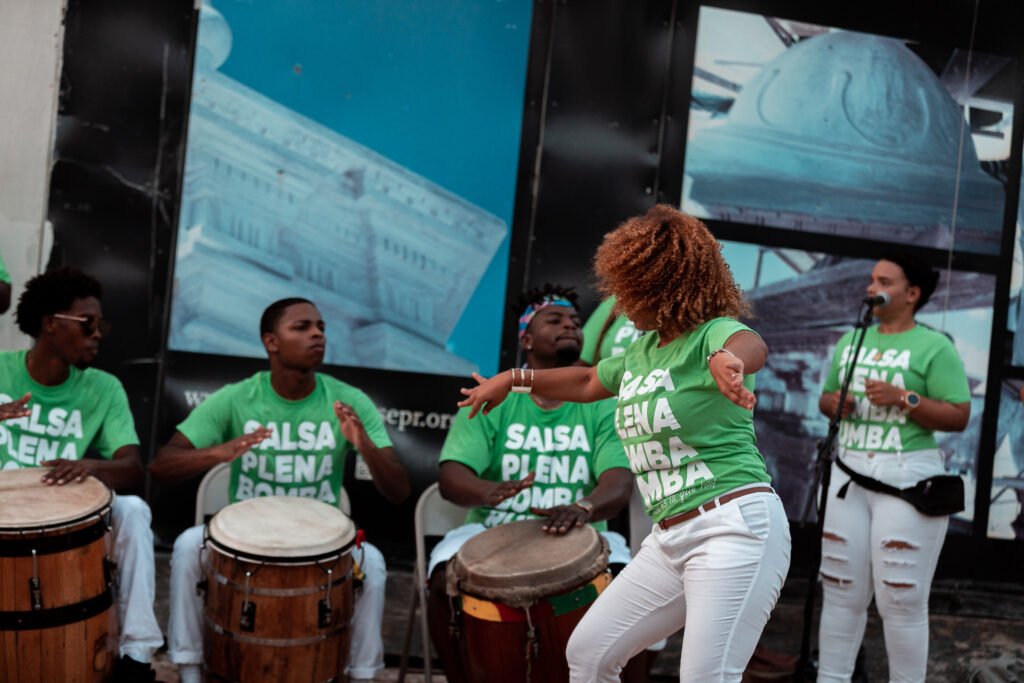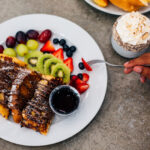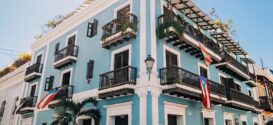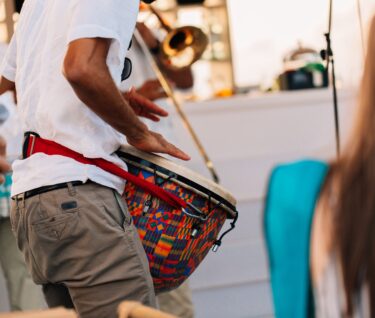
Music in Puerto Rico
“Puerto Rico’s relationship with music is everything” — Bad Bunny, AKA Benito Ocasio
A small island at the apex of myriad cultural influences (Taíno, African, Spanish and American), Puerto Rico has become one of the world’s new music capitals. From salsa maestro Héctor Lavoe—dubbed the Latin Frank Sinatra—to the global phenomenon that is Bad Bunny, Puerto Ricans have channeled their music to influence the world, not just reflect it.
Global influencer
A source of immense national pride, Puerto Rico—with a population of just 3.2 million people— produces more artists per million inhabitants than anywhere else in the world and commercializes music faster than any other culture. According to Bloomberg’s global “Pop Tracker,” in the first quarter of 2021 Puerto Rico produced five of the world’s top 25 pop stars: rapper Myke Towers and reggaetón/Latin trap artists Bad Bunny, Jhay Cortez, Rauw Alejando and Anuel AA.
When adjusted for the island’s population (including the diaspora), it has the most streamed music videos on YouTube, the most hits on the Latin Billboard Songs Chart and three of the top five Latin artists streamed on Spotify. Puerto Rico appears 36 times in the list of the 500 most viewed videos in YouTube history, behind only the U.S. and UK. Puerto Rican rapper Residente, former member of the group Calle 13, has won more Latin Grammys than any other artist.
Latin explosion
In 1999, Ricky Martin ignited the Latin pop explosion when his summer anthem, “Livin’ la Vida Loca,” became one of the best-selling singles of all time. Martin captured the world’s attention and paved the way for Latin artists to crack the English-speaking market. In 2004, Daddy Yankee’s “Gasolina” introduced the world to the phenomenon of reggaetón.
The summer of 2017 was owned by Daddy Yankee and Fonsi’s billboard-topping “Despacito.” It remains the second most streamed video on YouTube of all time, with more than 7.5 billion views—and counting. The unprecedented success of this global hit—uniting two Puerto Rican icons across different genres—was a moment that the Latin music industry would capitalize upon with aplomb.
Collaborations between U.S. and Latino musicians have helped Puerto Rican artists garner international acclaim. La Ozuna’s collaboration with Cardi B, “La Modelo” launched him onto the world stage in 2017 and Bad Bunny’s appearance with J Balvin on Cardi B’s smash hit single “I Like It” in 2018 was celebrated as a major crossover moment.
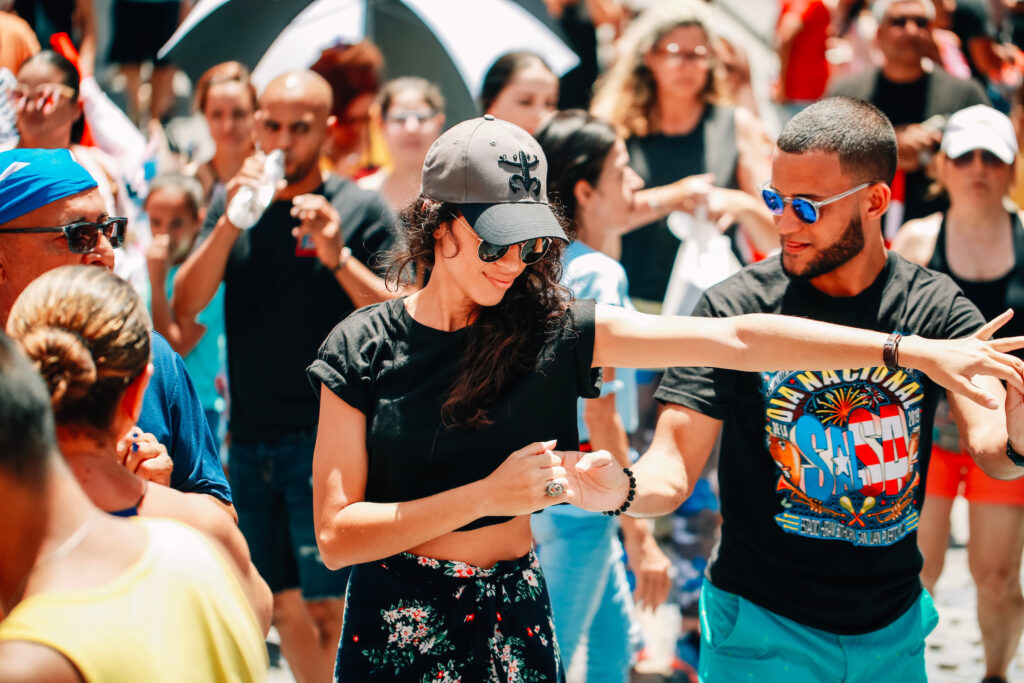
Puerto Rico’s musical genres
Salsa
Since the days when salsa maestro Héctor Lavoe distilled the range of human emotions into a single note, Puerto Ricans have dominated the salsa market. Born and raised in Ponce, Lavoe (1946–93) is hailed as the most important salsa singer in history.
The term salsa first appeared in the 1960s to describe the musical genre that had been ubiquitous in Puerto Rico for decades before. Technically speaking, salsa derived from the Cuban music son—a fusion of Spanish popular songs and Afro-Cuban percussion—but the term is often deployed generically to myriad Latin dance forms.
The global passion for salsa has its roots in New York City in the 1970s. It was Nuyoricans Tito Puente—“The King of Mambo”—Willie Colón and Ray Barretto who first introduced Latin jazz and salsa to English-speaking audiences. With the creation of the Fania Records label, the genre gained global recognition.
Latin Pop
Melding every Latin genre from salsa to Spanish rock, Latin pop has evolved in line with the traditions, diaspora and the creative verve of Latinos worldwide. The 1980s saw the emergence of the highly successful teen group Menudo, one of the world’s most successful boy bands, selling over 20 million records worldwide. Four-time Grammy-nominee Chayanne and child prodigy Yolandita Monge were idolized as Puerto Rico’s premier pop music exponents—until Ricky Martin stormed onto the scene. Challenged to create the theme song for the FIFA 1998 World Cup in France, Martin’s samba-rooted anthem, “La Copa de la Vida,” became the tournament’s official soundtrack.
Reggaetón & Latin Trap
While Salsa remains the iconic soundtrack for Latin America, and Daddy Yankee still reigns as the world’s most popular Latin artist, today the Puerto Rican music boom is fuelled by reggaetón and Latin trap.
Hugely popular across Latin America, reggaetón is a Puerto Rican derivation of dance hall that incorporates U.S. hip-hop, reggae and Latin American beats—it has soundtracked Puerto Rican adolescence since the early 2000s.
Underpinned by Dembow beats and tropical rhythms, the genre wears a distinct Latin identity and finds its physical expression in the perreo (grinding) dance. Back in the 90s, the genre provoked moral outrage and the authorities attempted to clamp down on record stores, claiming that reggaetón was a misogynistic and violent force. In her book, “Remixing Reggaeton,” music scholar Petra R. Rivera Rideau commented that “If in the 1990s, would-be censors sought to prevent the spread of underground in Puerto Rico, by 2002, the concern was how to deal with reggaeton’s omnipresence and potential international expansion.”
In 2005, Daddy Yankee, the “King of Reggaetón” made history when his album “Barrio Fino en Directo,” became the top selling album of 2005 and the entire decade. Artists in Puerto Rico have continued to rewrite the script. Media sensations Bad Bunny and Ozuna are behind the latest big trend: Latin trap, a fusion of reggaetón and trap music, a harsh rap subgenre from the southern U.S.
In the span of two years, Bad Bunny went from bagging groceries and posting his songs on social media to shaping music culture. In 2016, the artist’s famous trap anthem “La occasion,” brought Latin trap to the masses and enabled Spanish-speaking musicians to create their own authentic playbook.
“I work hard to be able to set myself apart from everything else that’s going on in the trap genre” — Bad Bunny.
What is most significant is that Bad Bunny has managed to infiltrate the domestic U.S. and European markets without conceding his mother tongue. A paradigm shift has been underway in the music industry where, for decades, English-speaking music dominated the global landscape.
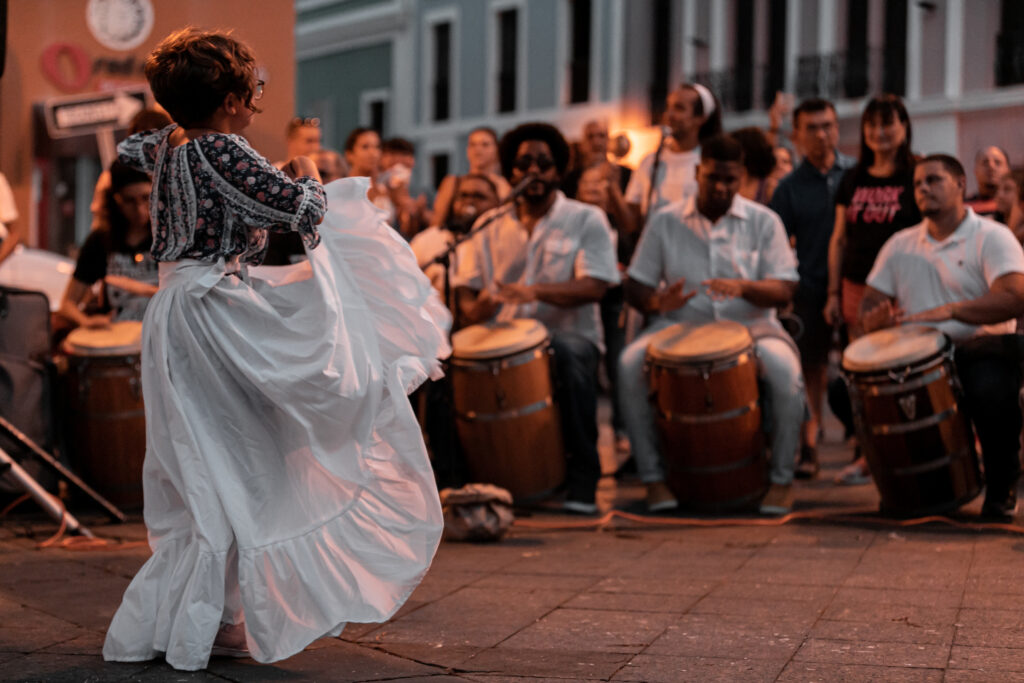
Traditional Folk Music
Bomba
A traditional music style, bomba is one of Puerto Rico’s most popular forms of folk music. Stroll through the streets of Old San Juan and you can still expect to see locals beating a goatskin covered rum barrel while a singer leads a dialogue between the percussionist and the dancer.
An expression of the island’s African heritage, the genre is defined by the use of three instruments: maracas, cuá (two wooden sticks) and the bomba barrel— a large drum. The dance dates from the beginning of the Spanish colonial period, when cane sugar workers in the towns of Mayagüez, San Juan, Loíza and Ponce united during dance gatherings or Bailes de Bomba (Bomba Dances) as a form of catharsis.
Marginalized as a musical genre of protest and resistance, Bomba has undergone a renaissance over recent years. In 2019, for the National Puerto Rican Day Parade, the mayor of San Juan danced bomba with Ricky Martin. Also movies and documentaries, like “Bomba: Dancing the Drum” and Spike Lee’s “She’s Gotta Have It,” have led to a mainstream embrace of the improvisational form.
Plena
Plena is also a folk music style, historically rooted in Puerto Rican and African music culture. Derived from bomba, the form originated in Ponce in the early 20th century to express the struggle of Puerto Rico’s rural communities in the face of seismic socio-political change. It was often referred to as the periódico cantado or “sung newspaper” for its social commentary.
Plena is characterized by three or more handheld drums, or panderos, of different sizes/pitches (seguidor, segundo and requinto), and the guiro (a gourd percussion of native Taino origin) which combine to create the music’s dynamic rhythms. They are often accompanied by the guitar, cuatro (a small guitar) and accordion, wind and brass instruments.
Over recent years, contemporary Latin music artists have revived the genre, riffing off traditional plena songs and paying homage to the form’s oral call and response form. Modern plena bands can often be heard at town festivals and events across the island and have become associated with progressive political groups. This new generation of plena artists include the all-women group, Plena Combativa, from the northeastern town of Ceiba who channel the form to protest against any expressions of patriarchal and misogynistic culture.
